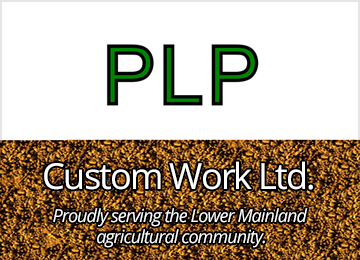Chantal Lavoi
Alternative Growing Media In Greenhouses
Producers of all kinds have developed agronomic “tool boxes” that change the way they do business. This hypothetical group of instruments includes, but is not limited to, new crop varieties, pesticides, biological controls, and “best practices” that have changed the way we produce the world’s food, fibre and fuel. Centuries of selective breeding, genetics research, and new technology
have changed the way farmers feed the world. This leads me to introduce what I believe could be agriculture’s most exciting ‘new’ tool, biochar.
I’ll introduce the fundamentals, discuss the uses and benefits, and touch on where the industry is at present.
For thousands of years, farmers in tropical regions have been using charred organic matter to improve soil quality. Applications of charred material in these regions was said to have improved biomass production and increased soil fertility, organic matter content, and water holding capacity. To all intents and purposes, the soil became darker and richer in nutrients and beneficial microbes, and as a result became much more productive. Recent research has proved that biochar is an even more beneficial tool than once suggested by these ancient producers, and its applications more varied than ever imagined.
What’s the difference between biochar and charcoal? Biochar is a charcoal-like substance created by the heating of organic matter under oxygen-free conditions, a process called pyrolysis. It can be derived from virtually any carbon source but is commonly produced from compost, manure, crop residue and forestry waste products.
The chemical and physical characteristics of biochar derived from each source are immensely different and are also influenced by pyrolysis, temperature and duration. The most noteworthy characteristics of these different biochars are pH, surface area, carbon content and ash content, which have a significant impact on how the biochar will react in the medium where it is applied.
The soil became darker and richer in nutrients and beneficial microbes, and as a result became much more productive.
Not only does this mean that biochar could have a place in field production, but it has been suggested that it can be used as a means to sequester carbon on a large scale. It is currently being used as an alternative growing medium in greenhouses and as a biogas in the alternative energy sector. In the future, biochar could be used as a supplement in countries that have poor soil quality or provide a growth medium in northern communities. It can even provide an alternate use for organic waste from livestock operations, greenhouses, forestry, etc., essentially “up-cycling” them into a product that has seemingly unlimited uses in many sectors.
So, we’ve discovered an amazingly versatile product that is relatively easy to produce. Why aren’t we seeing a great increase in production and widespread use of this miracle product?
Market development for biochar production has been moving at an astonishingly slow pace because of economic efficiencies. There are relatively few incentives for its use as a soil amendment since it is a net negative cost to the producer in most cases. Until more research unearths proof of economic viability, we likely won’t be seeing widespread use made of this great product any time soon.











